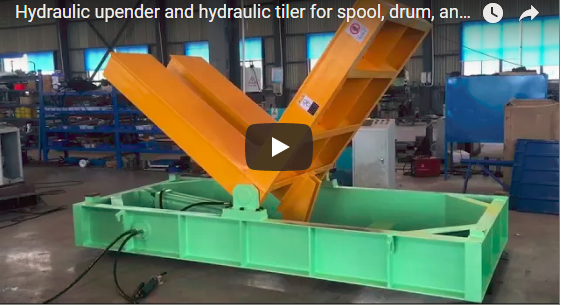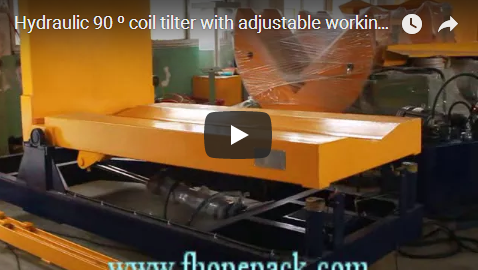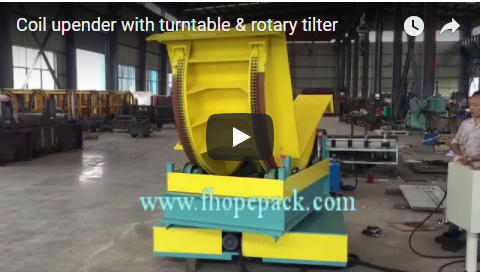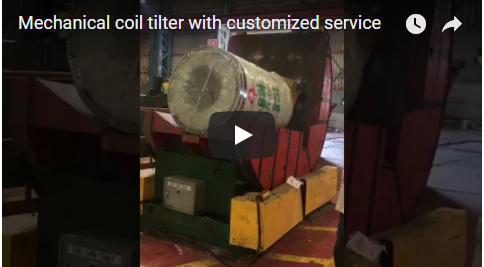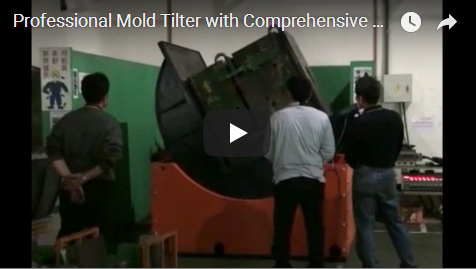Revolutionizing Material Handling: The Steel Sheet and Frame Flipping Turning Machine
In modern metal fabrication, efficiency, safety, and precision are paramount. Handling large, heavy, or unwieldy steel sheets and fabricated frames presents significant challenges, often creating bottlenecks, posing ergonomic risks, and increasing the potential for material damage. Addressing these critical shop floor issues requires specialized equipment designed for robust performance and operational flexibility. The steel sheet and frame flipping turning machine, often referred to as an upender or tilter in various configurations, emerges as a vital automation solution.
Addressing Ergonomic and Productivity Hurdles in Fabrication

Manual or semi-automated manipulation of sizable steel components is labor-intensive and inherently risky. Industry studies, such as those published in ergonomics journals, consistently highlight the high incidence of musculoskeletal disorders (MSDs) associated with heavy lifting and awkward positioning in manufacturing environments. Furthermore, reliance on overhead cranes or forklifts for simple reorientation tasks can be inefficient, consuming valuable time and equipment resources better allocated elsewhere.
This specialized flipping and turning machine directly tackles these challenges by providing a controlled, automated method for rotating and positioning materials. Its implementation translates to tangible benefits:
- Enhanced Worker Safety: Dramatically reduces manual handling, minimizing strain and potential injury. Complies with stricter occupational health and safety regulations.
- Increased Throughput: Faster cycle times compared to manual methods or less specialized equipment, directly boosting production line velocity.
- Reduced Material Damage: Controlled, smooth motion prevents scratches, dents, or warping often associated with manual or crane-based handling.
- Optimized Workflow: Frees up cranes and personnel for more complex tasks, improving overall shop floor logistics.
Key Operational Features and Engineering Principles
Drawing inspiration from patented designs focusing on load stability and controlled motion (e.g., advancements in hydraulic and electromechanical drive systems for smooth angular acceleration/deceleration), these machines incorporate sophisticated engineering for reliable operation.
- Robust Structural Design: Typically constructed from heavy-gauge, welded steel, often validated using Finite Element Analysis (FEA) to ensure structural integrity under maximum load conditions and dynamic forces during rotation.
- Precise Rotation Mechanism: Utilizes powerful drive systems (often hydraulic cylinders or geared electric motors) providing consistent torque for smooth 90° or 180° rotation. Precision control systems, potentially PLC-based, allow for variable speed and soft start/stop features, crucial for handling delicate or heavy items.
- Secure Clamping System: Features adjustable clamps or support platforms designed to securely hold various dimensions and thicknesses of steel sheets and frames without marring surfaces. Options may include non-marking contact pads or specialized fixtures.
- Intuitive Controls: User-friendly HMI (Human-Machine Interface) allows operators to easily initiate and monitor the flipping/turning cycle with minimal training.
Core Technical Parameters (Typical Ranges)
While specific models vary, key parameters generally include:
- Load Capacity: Ranging from a few hundred kilograms to upwards of 50 tons, catering to diverse application needs.
- Platform/Table Size: Configurable to accommodate standard sheet dimensions and custom frame sizes.
- Rotation Angle: Commonly 90° (upending) or 180° (full flip), with custom angles possible.
- Cycle Time: Optimized for speed, often completing a full rotation in under 60 seconds, depending on load and rotation angle.
- Power Source: Typically electric (e.g., 480V/3Ph/60Hz) or electro-hydraulic.
- Control System: Push-button pendant, remote control, or integrated PLC controls.
Applications Across the Fabrication Spectrum
The versatility of the steel sheet and frame flipping turning machine lends itself to numerous processes within the fabrication workflow:
- Inspection and Quality Control: Allows easy access to both sides of a sheet or frame for visual inspection or NDT (Non-Destructive Testing).
- Welding and Assembly: Positions large frames or weldments optimally for welder access, improving weld quality and ergonomics.
- Surface Treatment: Facilitates uniform access for painting, coating, blasting, or cleaning operations.
- Process Transition: Efficiently reorients materials between different stages of production, such as moving from cutting/punching to bending or assembly lines.
- Loading/Unloading: Assists in safely positioning materials onto or off transport systems or subsequent processing equipment.
Safety Integration and Compliance
Safety is a non-negotiable aspect of industrial machinery. These turning machines are engineered with multiple safety features:
- Emergency Stops: Easily accessible E-stop buttons to halt operation immediately.
- Safety Interlocks: Prevents operation if guards are open or load is improperly positioned (where applicable).
- Overload Protection: Safeguards the drive mechanism and structure from excessive loads.
- Optional Guarding: Physical barriers or light curtains to restrict access during operation, complying with standards like OSHA (USA) or CE marking (Europe).
Conclusion: A Strategic Investment in Fabrication Efficiency
The steel sheet and frame flipping turning machine represents more than just material handling equipment; it's a strategic investment in operational excellence. By automating a physically demanding and potentially hazardous task, fabricators can achieve significant improvements in productivity, workplace safety, and material integrity. Its robust design, precise control, and focus on safety make it an indispensable tool for shops looking to streamline workflows, reduce operational costs, and maintain a competitive edge in today's demanding market. Adopting such technology aligns with lean manufacturing principles and positions fabricators for greater efficiency and profitability.

